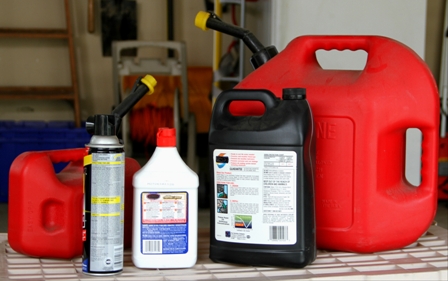Hydrocarbons, a chemical compound commonly found in household items from cleaning products to gasoline, are among the top 10 causes of pediatric poisoning deaths in the United States. A new study by researchers at the Central Ohio Poison Center and the Center for Injury Research and Policy, both at Nationwide Children’s Hospital, found these injuries are most likely to occur during months when the weather is warm and are associated with activities such as mowing lawns, use of Tiki torches and use of lighter fluid for outdoor cooking.
According to the study, published online May 6, 2013 and in the June 2013 print issue of Pediatrics, 31 percent of hydrocarbon exposure incidents were reported during the summer with 17 to 19 percent being reported during winter months.
During the 10-year study period , 66,000 calls were made to regional poison centers and more than 40,000 emergency department visits were reported regarding exposure to hydrocarbons in children under the age of 5. The study also found that these incidents most frequently occurred in boys, and in children between one and two years of age. Gasoline was the product most commonly associated with ED visits and calls to poison centers and exposures occurred during the refueling of a vehicle.
“The good news is that the number of injuries has declined significantly between 2000 and 2009 because of changes in packaging laws and public awareness,” said study co-author Heath Jolliff, DO, associate medical director for the Central Ohio Poison Center at Nationwide Children’s. “Unfortunately, more children are poisoned from hydrocarbons because of incidents at home, demonstrating a greater need for preventive education for parents.”
Hydrocarbons are chemicals such as gasoline, kerosene, lighter fluid, lamp oil, mineral oil, and some cleaning solvents. They are most dangerous when children swallow and choke on the chemical, breathing it into their lungs, leading to pulmonary injury.
“Inquisitive children mistakenly identify hydrocarbons as a food or beverage and attempt to ingest the poison, which is the most common way children are exposed to the chemical,” explained study co-author Lara McKenzie, PhD, MA, principal investigator in the Center for Injury Research and Policy at Nationwide Children’s. “The changing seasons should remind parents to ensure proper storage of hydrocarbons in their original containers.”
When parents made phone calls to their regional poison centers, their cases were mostly managed at home without the need to be treated in the emergency department. This trend has been reported in other studies and further demonstrated the potential cost savings of regional poison centers.
Both Jolliff and McKenzie are also faculty members at The Ohio State University College of Medicine. Their safety tips for parents include:
- Store products properly and high up where children can’t see or reach them.
- Keep products in their original, child-resistant package containers.
- Supervise children when these products are being used in and around the home.
- Keep cabinets with products containing hydrocarbons locked.
- Keep children safely in the vehicle during fuel fill ups at gas stations.
- To report a poisoning or get poison prevention information, call your local poison center toll-free: (800) 222-1222.

More than 100,000 injuries were reported in children under 5 due to hydrocarbons between 2000-2009.
View and download this high resolution photo of hydrocarbons.
